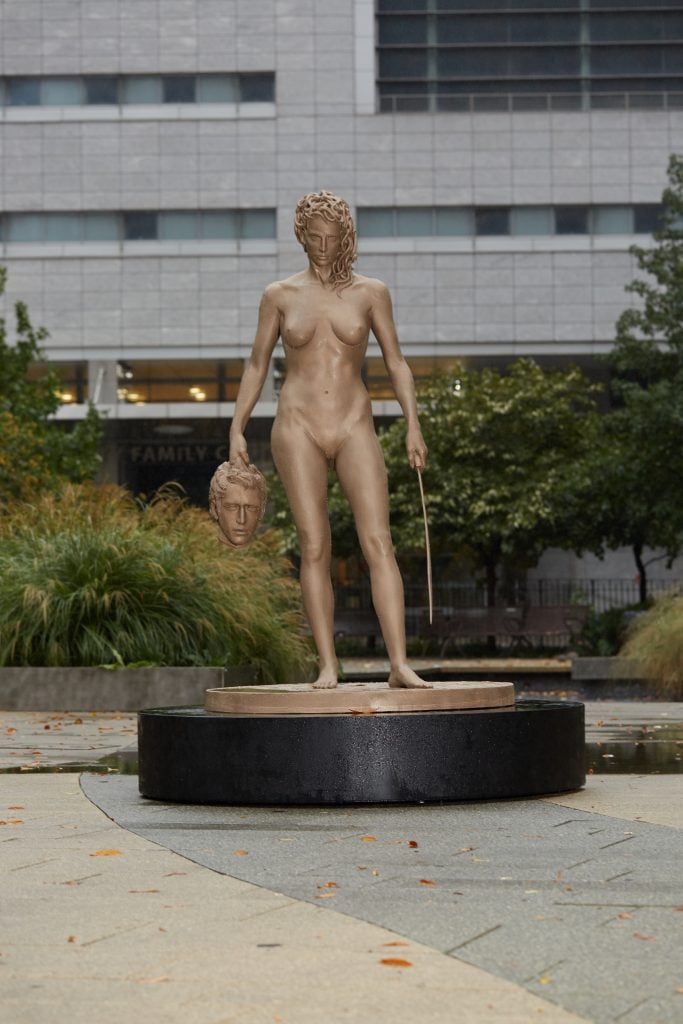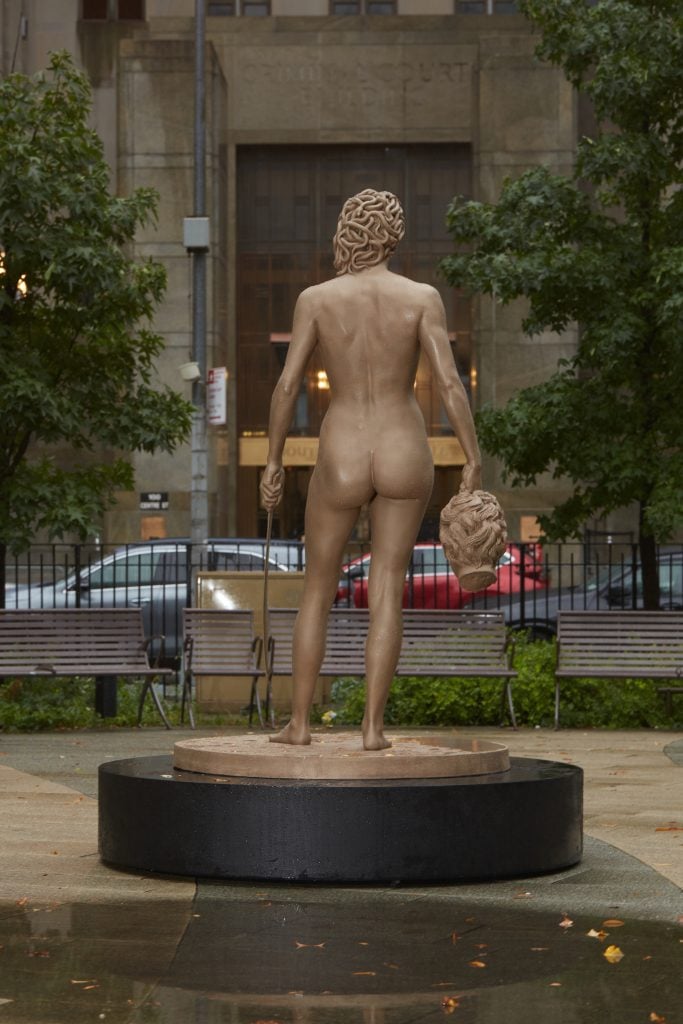Art World
The Artist Behind a (Very Questionable) Nude Public Statue of Medusa as a Feminist Avenger Defends His Work
The monument has its fair share of critics.

The monument has its fair share of critics.

Sarah Cascone

Medusa, the terrifying monster of ancient Greek myth, stands triumphant in New York City today, holding aloft the head of her slayer, Perseus, in a new seven-foot-tall bronze statue outside of the New York County Criminal Court in Lower Manhattan.
But the work, which is on view outside the courtroom where Harvey Weinstein was tried and sentenced to 23 years in prison for rape and sexual assault, has critics who take issue with a male artist criticizing sexual violence against women, according to Hyperallergic.
The piece, Medusa With the Head of Perseus, is the work of Luciano Garbati, who was inspired by Medusa’s tragic story as it was told by the Roman poet Ovid in the Metamorphosis. The god Poseidon raped Medusa, who was then victim-blamed and punished by Athena, who cursed Medusa by turning her into a deadly monster with serpents for hair. The hero Perseus later defeated Medusa by beheading her.

Benvenuto Cellini, Perseus with the Head of Medusa (1545–54) in the Piazza Della Signoria in Florence. Photo courtesy of Wikimedia Commons.
Garbati wanted to humanize the woman behind the myth, and to question her identity as a monster. He based his sculpture, originally created in 2008, on the Italian Renaissance masterpiece Perseus With the Head of Medusa (1545–54) by Benvenuto Cellini, located in the Piazza Della Signoria in Florence.
It was an idea that resonated when he posted a resin version of the artwork on Instagram in June 2018. With the #MeToo movement in full swing following reports of sexual abuse by Weinstein, Garbati’s Medusa was adopted by some as a feminist symbol of equality and justice.
“Something in the sculpture has been captivating women’s attention, which means that I have been able to capture in it some aspect of the feminine pathos,” Garbati told Artnet News in an email.

Luciano Garbati, Medusa With The Head of Perseus in Collect Pond Park, New York City. Photo courtesy of MWTH Project and Art in the Parks.
But some have taken offense at the statue’s lack of pubic hair, which they say reflects idealized beauty conventions. (More humorously, the sculpture has also spawned jokes about whether that part of Medusa’s body was also covered in snakes).
“I believe in the necessity of gender equality and I am honored to be part of the discussion,” Garbati told Artnet News, adding that the lack of body hair was an artistic choice made in “the tradition of classical sculpture. It is the same when it comes to male representations.”
“Formally in a sculpture, the pubic hair can easily become either an unwanted distraction or an artificial ornament,” he said.
If this is supposed to be so empowering for women, why is Medusa so skinny and pube-less? This seems more like some man’s fantasy than a statement a commentary on sexual assault.
— Laika the Space Dog (@MicaelaMendlow) October 11, 2020
Garbati’s Medusa previously made her New York debut in December 2018 in the “MWTH Project,” a group show exploring revisionist versions of classical heroic narratives. Organized by photographer Bek Andersen in response to the Medusa statue, the show has since evolved into an artist-led project.
A new version of the sculpture, cast in bronze by Vanessa Solomon of Carbon Sculpt Studios in Red Hook and Laran Bronze Foundry in Philadelphia, has been created for the latest presentation, staged in Collect Park Pond by the New York City Park Department’s Art in the Parks program.